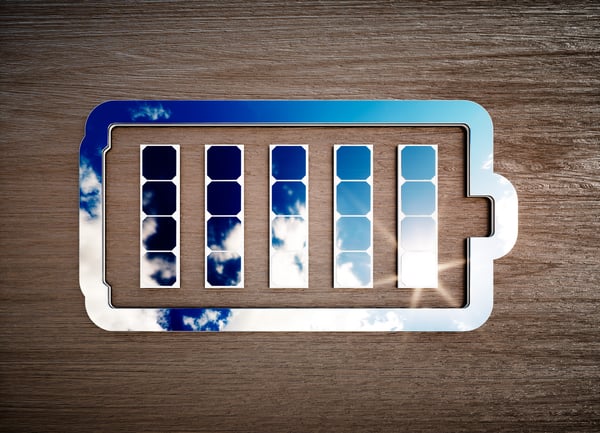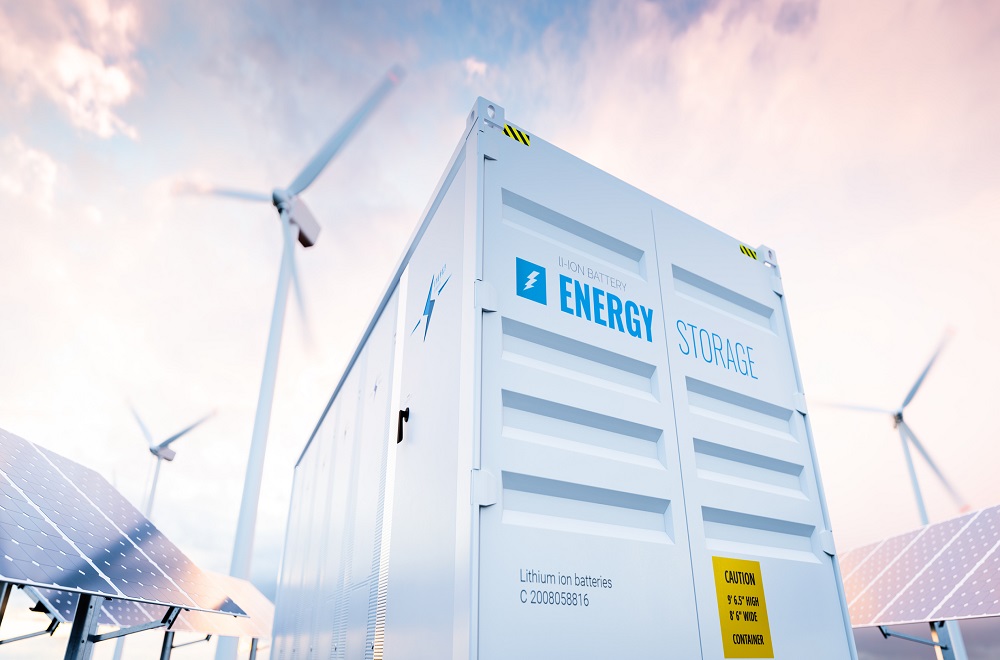By Nashvinder Singh and Jigeesha Upadhaya
Energy storage systems capture surplus energy during times of high production/low demand and store it for use during times of low production/high demand. While not a new technology, energy storage is rapidly gaining traction as a way to provide a stable and consistent supply of renewable energy to the grid.
The energy storage system of most interest to solar PV producers is the battery energy storage system, or BESS. While only 2–3% of energy storage systems in the U.S. are BESS (most are still hydro pumps), there is an increasing move to integrate BESS with renewables.
What is a BESS and what are its key characteristics?
Largely, BESS systems use lithium-ion batteries to store electricity. They can be used either as stand-alone or coupled with renewable energy sources.
Main characteristics used by the industry and which vary with different BESS chemistries are:
- Rated Power Capacity
- Rated Energy Capacity
- Depth of Discharge (DOD)
- Storage Duration
- Cycle Life
- State of Charge (SOC)
- Round-Trip Efficiency
- System Life
- Safety Monitoring and Control
What are the major parts of a BESS?

A typical BESS includes:
- Battery modules – connected in series and parallel for required capacity.
- Storage enclosure with thermal management.
- Power conversion system (PCS) – All the clusters from the battery system are connected to a common DC bus and further DC bus extended to PCS.
- Battery management system (BMS), which continuously monitors the voltage, temperature, fire warning and state of charge (SOC) of the battery. It regulates the charging and discharging power depending on input signal.
- Energy management system (EMS) – The control logic is executed at EMS. It will provide input signal to PCS for charge/discharge depending on control logic requirement.
A BESS is an energy source, and like any energy source that feeds the grid, it must be managed and controlled. At Nor-Cal, we provide SCADA and EMS solutions for monitoring and controlling BESS per site requirements.
Why is integration of BESS gaining traction?
BESS systems are gaining traction for both technical and commercial reasons. Technically, they provide immense benefits to the grid:
- Use in emergency response systems or for storm outages
- Frequency regulation
- Grid stability
- Reduction of grid congestion
- Ramp rate control
- Energy arbitrage
- Peak shaving
- Black start – providing quick energy or stabilizing energy to get the grid started at a good response rate
What's most exciting is the use of BESS in helping the world transition to renewable energy.
Renewables are intermittent in nature—production goes up when the sun is shining and the wind is blowing, but goes down when the day is overcast or the winds die down. On the current grid, on-demand gas power is still needed to fill in the gaps. As more renewables come online and begin contributing to the grid in order to meet ambitious clean energy goals, energy storage technologies, including BESS, can help ensure a stable, steady supply of energy.
Being able to store excess energy is also a financial benefit to renewable energy producers. Instead of having to curtail production, at the request of the grid or utility, that curtailment can be stored. When production later goes down, that stored energy is available for sale to fill in the gaps.
Another reason for the rise in BESS systems is the affordability of lithium-ion batteries. The prices for this technology are going down and are expected to go even lower. This is moving the needle away from older existing energy storage systems and towards BESS.
How important is the siting of BESS?
The siting of any power generation resource is important, but the immense flexibility of BESS systems mean they can be installed and utilized in any number of ways:
- Front-of-meter or behind-the-meter
- Near to the loads/energy sources or independent/standalone
- Co-located with variable renewable energy resources
- Used to augment traditional power generation
There are exciting residential, commercial and industrial behind-the-meter applications. Consumers with rooftop solar panels can store excess energy using a BESS, and then have that power available as a backup. The California Solar & Storage Association (CALSSA) estimates behind-the-meter battery deployments in the 2–2.5 GW range through the end of 2025.
What are the possible configurations?

There are a variety of configurations available for BESS depending on siting. BESS can be utilized in a standalone setup, in which the BESS takes electricity from the grid when the supply is high and sends it back when the demand is high. For PV + Storage systems, four types of configurations are used.
Independent
In this, both PV and storage systems are not physically co-located and do not share common components or control strategies. Being independent, storage responds to overall grid conditions to provide peak capacity, shift energy from off-peak to on-peak periods and provide ancillary services. Although the storage could charge from PV energy, it would only do so when grid conditions made this an economic option.
DC Coupled (Flexible Charging)
In this case, the PV and storage is coupled on the DC side of a shared inverter. The inverter used is a bi-directional inverter that facilitates the storage to charge from the grid as well as from the PV.
DC Coupled (PV-Only Charging)
This configuration is similar to DC coupled, but the storage can be charged using PV only, not from grid electricity. This is also known as the DC tightly coupled configuration.
AC Coupled
In this case, PV and storage are co-located with two separate inverters. BESS is charged by converting the PV electricity from DC to AC and then back to DC at the BESS inverter for the BESS to store it. Since there are no shared components, the storage can still act independently of the PV system.
AC coupled configurations are typically used for existing PV systems, because it's easier to just add on a second inverter, add a BESS, and then use the existing circuitry to integrate the BESS into that. DC coupled systems are more common for new PV + Storage installations.
How are battery applications typically categorized?
Battery applications are typically categorized on the basis of energy and power.
- Energy supply interactions happen on a slower timescale, where large amounts of energy are supplied or pulled from the grid. These are referred to as "energy" applications. These applications include energy arbitrage and energy time-shift. Since energy response typically has a deeper depth of discharge on a consistent basis, these applications have a steeper degradation curve for some chemistries.
- Power applications normally transpire on a much faster timescale and are employed to support real-time control of the power grid. Power applications include frequency response, load ramping and voltage support.
Each BESS has a rated energy capacity measured in kilowatt-hours (kWh) or megawatt-hours (MWh), as well as rated power capacity measured in kilowatts (kW) or megawatts (MW). Most BESS manufacturers also provide Depth of Discharge (DOD), which indicates the percentage of the battery that has been discharged relative to the overall capacity of the battery. Staying within maximum recommended DOD is important for optimal performance and lifespan of the battery.
For example, if the manufacturer of a 100 kWh battery recommends a maximum DOD of 80 percent, you shouldn't use more than 80 kWh from the battery without recharging.
These ratings, the internal chemical structure of the battery itself, the cycle frequency, and battery health all play a critical role in determining if a BESS is suitable for a specific application. For energy applications, you will need to pay attention to different parameters than you would when using a BESS system for power applications.
How can Nor-Cal help with integrating BESS systems for PV projects?
Energy storage is the future of solar PV, and we are right there to help our customers with the latest developments. We coordinate with BMS manufacturers and integration companies to implement the necessary EMS requirements into our SCADA systems. We can also ensure that the BESS meets utility and ISO requirements.
If you need a PV-Solar SCADA provider who can help you take advantage of all the benefits BESS systems have to offer, contact us today. Whether you have a PV + Storage integration or a standalone BESS, we'd be happy to talk with you about your options. Schedule a call with us today.





